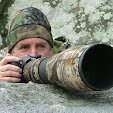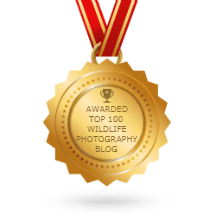 |
Cattle Egrets at Westhay Drove
|
I finished my latest Naturetrek 3 day tour of the Somerset Levels last week with a final successful tour with my co-host Chris Wilkinson.
The weather held out for us with good spells of sunshine and only a hint of misty drizzle late on one afternoon and heavy rain whilst we had breakfast on the first day which quickly turned into sun & blue sky by the time the plates had been cleared away!
Whilst water levels had been dropping since the floods before Xmas a few heavy downpours had raised levels once again, especially in the flooded arable fields and meadows where no pumping could take place.
The Avalon hide at RSPB Ham Wall remained out of service as the access path remained flooded.
We
visited several different reserves and open areas including RSPB
Greylake, RSPB Swell Wood, West Sedgemoor, RSPB Ham Wall, Shapwick Heath, Sharpham Drove
etc. and ticked off 76 different species including many classic Somerset
Levels specialties such as Common Crane, Cetti's Warbler,
Marsh Harrier etc.
There were vast numbers of wildfowl with Teal &
Wigeon far outnumbering ducks such as Gadwall, Shoveler, Pochard &
Pintail. Even though this was a "Birdwatching for Beginners" event we weren't averse to spotting an odd rarity and we were thrilled to see the elusive and very rare Baikal Teal at RSPB Greylake.
 |
| Baikal Teal at RSPB Greylake |
|
|
 |
Marsh Harrier
|
 |
Drake Wigeon
|
 |
Drake Teal
|
Once again we spent some time at RSPB Swell Wood to concentrate on woodland species and we found Great, Blue, Coal & Marsh Tits alongside Nuthatch, Treecreeper and lots of nesting Grey Herons.
 |
| Nuthatch |
 |
| Grey Heron |
|
We visited the overlook at Swell that looked down from the escarpment onto the West Sedgemoor and watched 4 Common Cranes feeding in the wet marsh. There were also 3 Roe Deer grazing in the same area. These cranes added to the 3 we'd seen earlier at RSPB Greylake so a total of 7 cranes spotted before lunch...good going!
 |
| Common Cranes at RSPB Greylake |
|
After a filling lunch at the King Alfred Inn at Burrowbridge we headed to RSPB Ham Wall to checkout the general birdlife before the Starlings came into roost that evening.
Dusk was getting later now and it was just past 5pm when the first starlings turned up. They'd been fairly unpredictable in their roost site for most of this winter, regularly swopping between Ham Wall, Meare Heath & Shapwick Heath.
However we got it right on this evening and massive flocks flew in close over our heads to lots of whoops of delight from one & all.
 |
| Starlings at RSPB Ham Wall |
|
Whilst we were listening to a Bittern "booming" and getting excited one of our group watched one fly across at VP1 and managed to inform the RSPB Warden and direct him to it!
On the third day we visited Long Drove at Sharpham early but failed to see any Scaup as we did the previous week but we did see approximately 100 Cattle Egrets with a few Little & a couple of Great Egrets. As the previous visit we also saw a Glossy Ibis feeding with the Cattle Egrets.
Later in the morning we visited Noah's Lake at Shapwick Heath where we saw thousands of wildfowl, including hundreds of Pintail. We also saw Kingfisher & a brief glimpse of the longstaying Whooper Swans.
 |
| Wildfowl at Noah's Lake Shapwick Heath. | |
|
 |
Great-crested Grebe
|
 |
Gadwall pair
|
After a cracking lunch at the Avalon Marshes Tea Hub we drove around Westhay Drove area and found another large flock of Cattle Egrets this time with 3 Glossy Ibis and dozens of Mute Swans.
 |
Cattle Egrets at Westhay
|
 |
| Cattle Egrets at Westhay |
 |
| Cattle Egrets at Westhay | |
We then headed back to Ham Wall to watch the Starlings arrive and as they flew across us it became evident that they were heading West and seemed to be going toward Shapwick or Meare Heaths.
We enjoyed the spectacle of them passing overhead but missed the final moment as it seemed they'd changed their roost site yet again. It was most fortunate that we'd had amazing views the previous afternoon!
There
are several more 3 day tours to come at the end of the year and some
spring & summer tours as well so if you're interested checkout the Naturetrek
website at...
https://www.naturetrek.co.uk/tours/the-somerset-levels
Most are based at the Swan Hotel in Wells directly opposite the cathedral.
























%20(1).JPG)









































